Benchmarks: 3D performance
Moving on to 3D performance testing, we start with low resolution single-GPU tests, then see how well the boards handle a multi-GPU scenario.
Far Cry
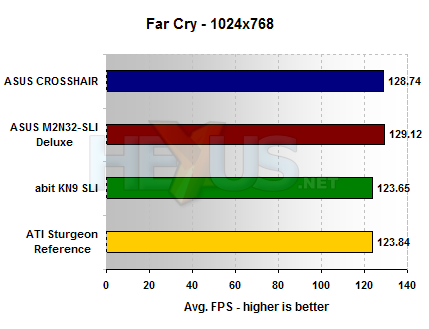
Both ASUS boards outperform abit's and ATI's boards. Despite having fewer bright blue LEDs, the M2N32-SLI is ever so slightly (0.06%) quicker than the CROSSHAIR.
Quake 4
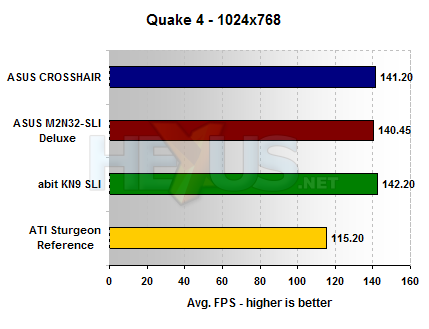
In Quake 4 it's all change, the Radeon powered Sturgeon reference board losing out to the three GeForce 7900 GTX assisted boards, NVIDIA's cards clearly favouring the Doom 3 based graphics engine. It's most interesting to see the abit KN9 SLI in front... by one whole FPS.
Splinter Cell: Chaos Theory
First up, single-GPU Splinter Cell at low resolution.
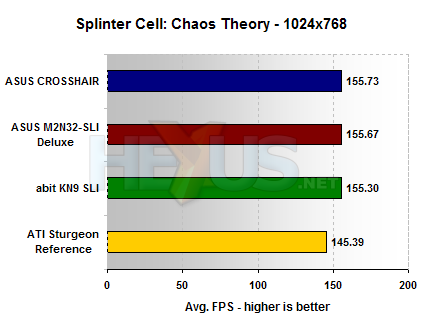
Very little in it, showing that no motherboard is holding the hardware back.
Upping the resolution will give us more GPU-bound results, but will also put further stress on rest of the system.
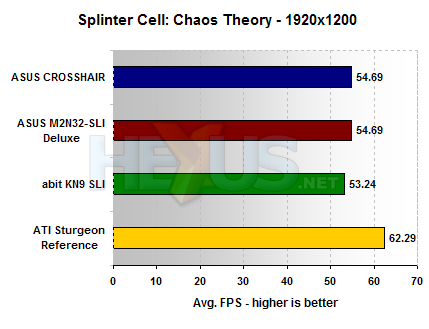
Sturgeon runs out in front, while all three NVIDIA boards fight amongst themselves. The two ASUS nForce 590 SLI boards provide identical performance averages, which the abit nForce 570 SLI sits slightly slower than them.
Finally, we enabled SLI and CrossFire on the relevant boards to validate their multi-GPU support.
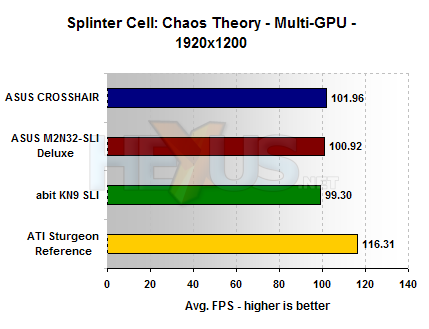
Our final figures show that similar performance can be obtained from both ASUS boards and that they're (slightly) faster than the abit KN9 SLI. However, it's not all peachy. Our SLI problems with the M2N32-SLI extend beyond troubles enabled the second card. We also had erratic performance with both ASUS boards, even during the same session. System reboots would change the performance. Sometimes it would be what we'd expect, other times it would drop inexplicably. At one point we witnessed a 50% performance drop.
Naturally, we tried different drivers (91.27 and 91.31) along with various bits of BIOS fiddling, but to no avail. We can only hope that the problems experienced can be fixed through a driver or BIOS update.









